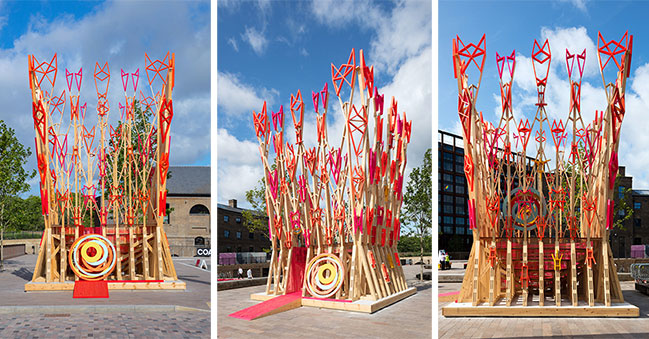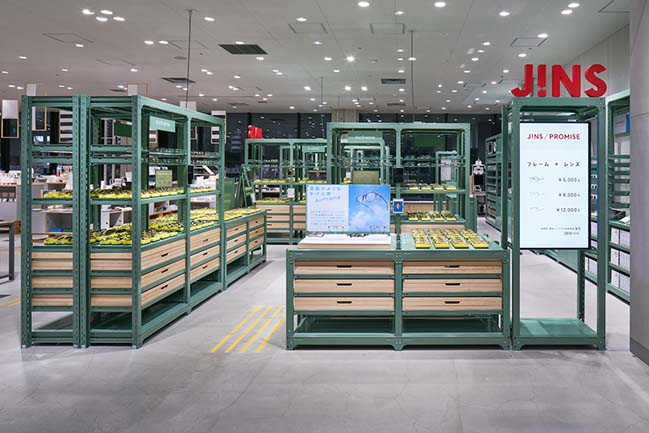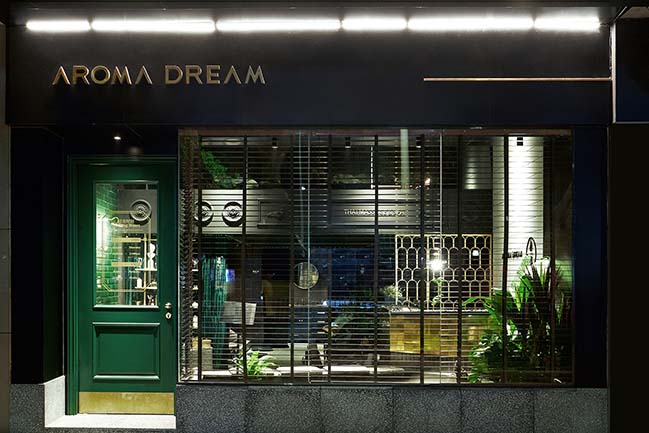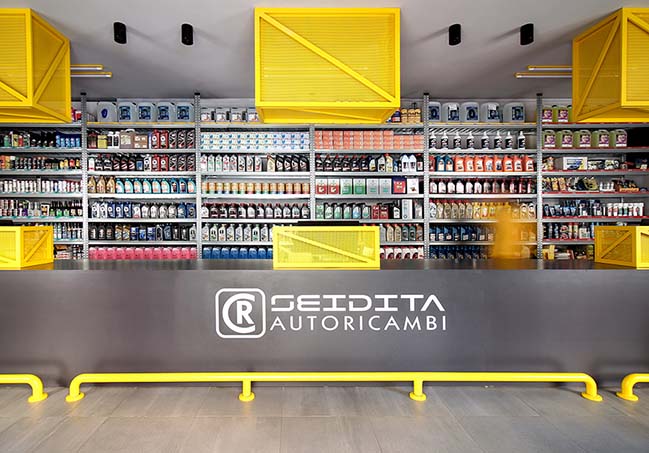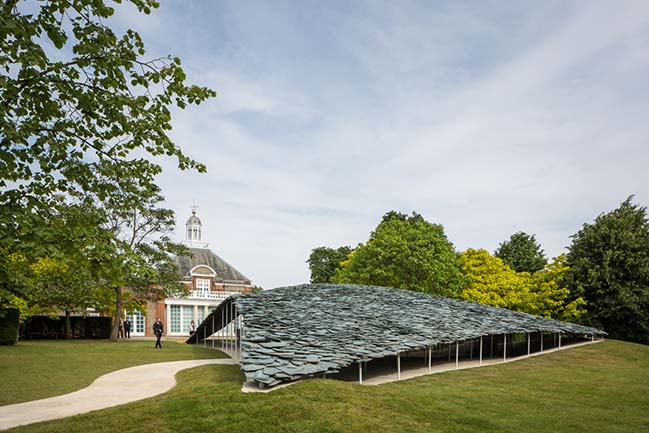07 / 14
2019
Prof. Dr. Eckart Köhne talks about the "museum revolution in Baden". Opened on 13 July, the new permanent exhibition "Archaeology in Baden" in the Baden State Museum in Karlsruhe, Germany, adopts a new approach to the communication of knowledge: the museum visitor becomes an active user of the exhibits.
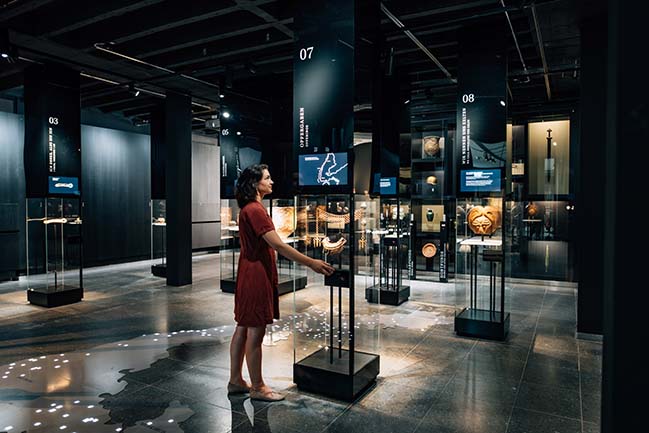
Implementation Exhibition Design: ATELIER BRÜCKNER
Client: State Baden-Württemberg/Baden State Museum
Location: Karlsruhe, Germany
Year: 2019
Area: 600 sqm
Light Planning: Belzner Holmes
Photography: Marcus Sies
"The aim is to enable a new, intensive mode of access to the various collections", says museum director Eckart Köhne. Users explore the contents of the museum on the basis of what they actually are interested in – interactively, through diverse media and in direct contact with the exhibits. They select the items of interest digitally. A user ID, which replaces the admission ticket, makes it possible to retrieve and expand the store of knowledge at any time.
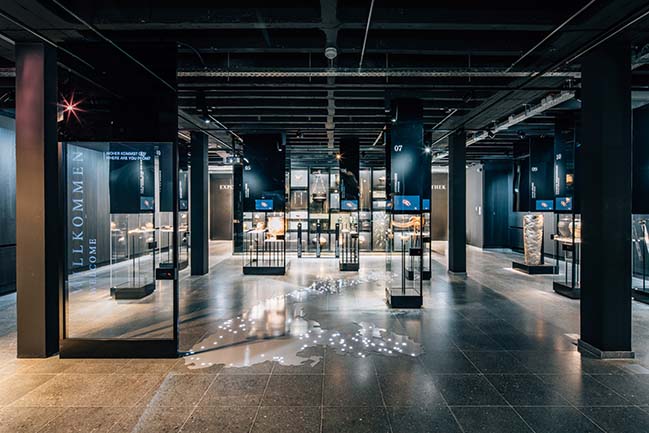
"Archaeology in Baden" is the pilot project for the new museum concept of the Baden State Museum. The exhibition was created in collaboration with the HTWG Konstanz University of Applied Sciences, Faculty of Architecture and Design, headed by Prof. Eberhard Schlag, and the University of Konstanz, Faculty of Information Technology and Science, headed by Prof. Dr. Harald Reiterer. ATELIER BRÜCKNER was responsible for the implementation of the exhibition design. "Linking the analogue presentation of objects to the digital level of communication makes it possible to show such a large number of objects in the Expothek and make them accessible in terms of their meaning and content", says Prof. Eberhard Schlag, partner ATELIER BRÜCKNER.

The 600 square metre exhibition offers three narrative spaces with different possibilities of interaction: the darkened room entitled "Meilensteine Badens" (Baden's Milestones) serves as an introduction. The sites where the archaeological items in the museum were found are illuminated as square points of light on a floor map of the Baden region. 13 highlights, which stand out and are prominently placed in the room, include the "Heidelberger Kopf" (Heidelberg Head), a fragment of a Celtic tomb stele from the 5th century BC and the oldest depiction of St. Mary north of the Alps: an enthroned Mother of God on a Merovingian decorative disc. Visitors can obtain information on the objects by activating the glass showcases with their user ID. The integrated display shows a description of the object and other details about it such as the reconstruction or original use. The silver decorative disc, for example, was used as horse decoration around 600 AD.
The "Meilensteine Badens" section provides an overview of the region's archaeological epochs. The visitors feel like being directly involved: A "welcome wall" greets them in the previously chosen language (German or English) and shows their current place of residence. The dark, vertical strips that enclose the space make up a timeline. They start with the "I" of today and reach back to the Stone Age. Each of the 2,000 strips represents a generation (20 years). Individual strips are pulled out and given epoch names. They correspond with the exhibited archaeological objects.
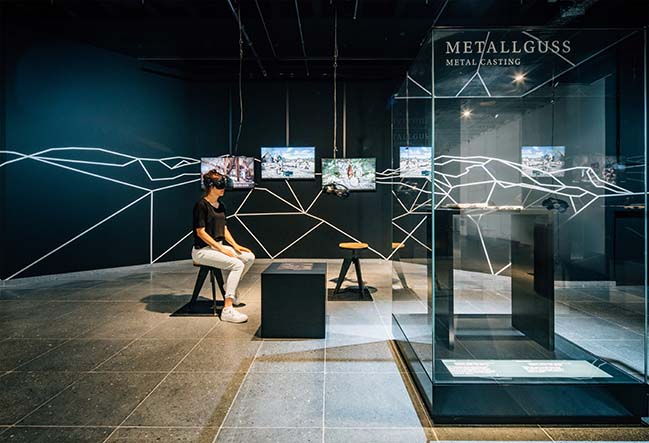
A wall of glass showcases separates the "Meilensteine Badens" from the neighbouring space, which presents further finds, mounted to look as if they are hovering, in accordance with the context in which they were discovered. Depending on the visitor's selection, individual finds, settlement remains, burial finds or hoards are lit up. Audio stations explain the specifics.
The central room, the Expothek, is the heart of the new concept. Here, the visitor can physically handle, previously selected objects. A scientist, called an "Explainer", describes the historical background and hands the object over to the visitor. The aura, the weight, the surface structure and signs of usage are impressive. In addition to this, the objects can be recorded with a 3D scanner, as a result of which the museum's digital archive is simultaneously expanded.
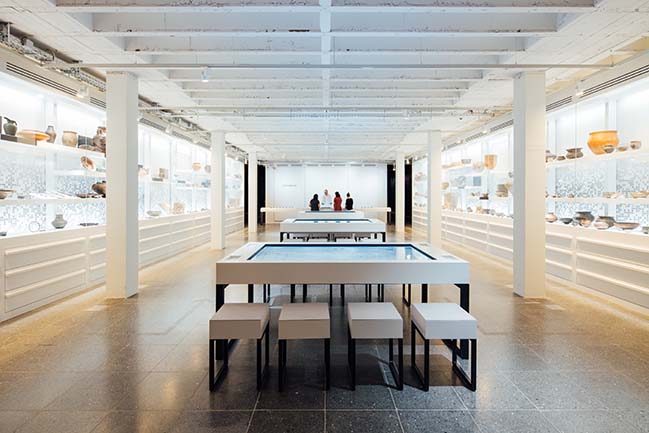
The long walls of the brightly lit room, looking like a research laboratory, are designed as visible archive. Shelves and drawers contain around 1,400 objects, arranged according to epochs: Stone Age, Bronze Age and Iron Age, as well as Roman Period & Protohistory. With the help of an ExpoPhone, which the Explainer hands out, the collections can be explored virtually. Information on the objects is displayed on the ExpoPhone in augmented reality. Three large interactive media tables in the middle of the room also enable access to the collection. Here, the visitor can look for specific archaeological sites, take part in quiz games and view high-resolution images of the exhibits.
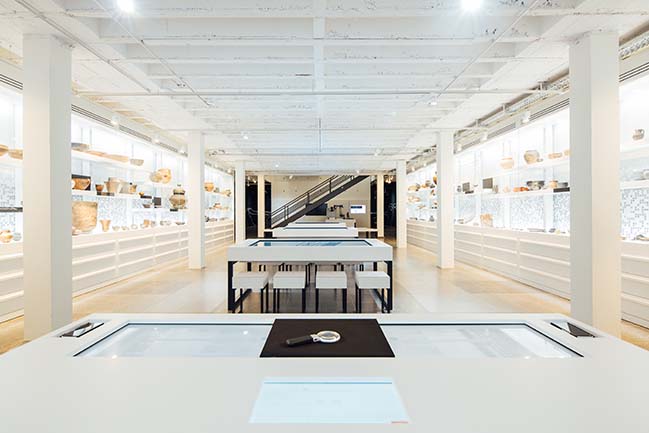
Finally, the ExpoLab, a darkened room, in which three finds are currently being presented, invites the visitor to experiment. Virtual-reality goggles take the visitor into the past, making it possible to experience the exhibits in their original context. A grave find from the 1st half of the 7th century, for example, allows for immersing oneself into the world of the interred Merovingian, whereby the visitor is surrounded by a digital landscape. By means of a view guidance system, the visitors select their preferred language; they activate the individual object descriptions and the perspectives from which they look at the occasion. Initially, the visitor is in a forest, standing between the warrior and a bowman, who attacks from ambush. The next scene shows the dead man in his grave from a bird's-eye perspective. Monitors on the wall show what the visitor is experiencing at any particular moment.
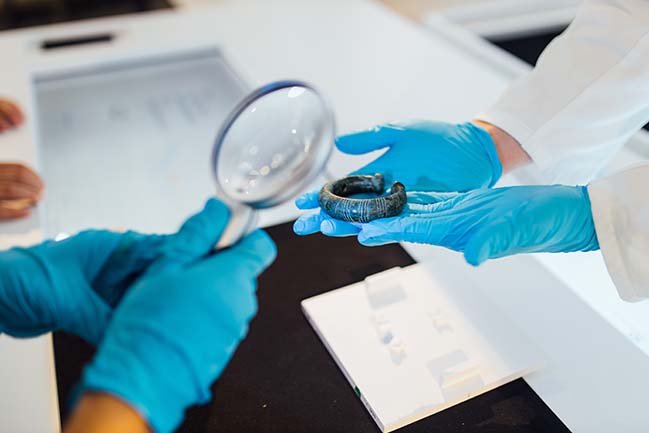
Archaeology in Baden by ATELIER BRÜCKNER
07 / 14 / 2019 Opened on 13 July, the new permanent exhibition Archaeology in Baden in the Baden State Museum in Karlsruhe
You might also like:
Recommended post: Life between paintings Praha by XTOPIX

